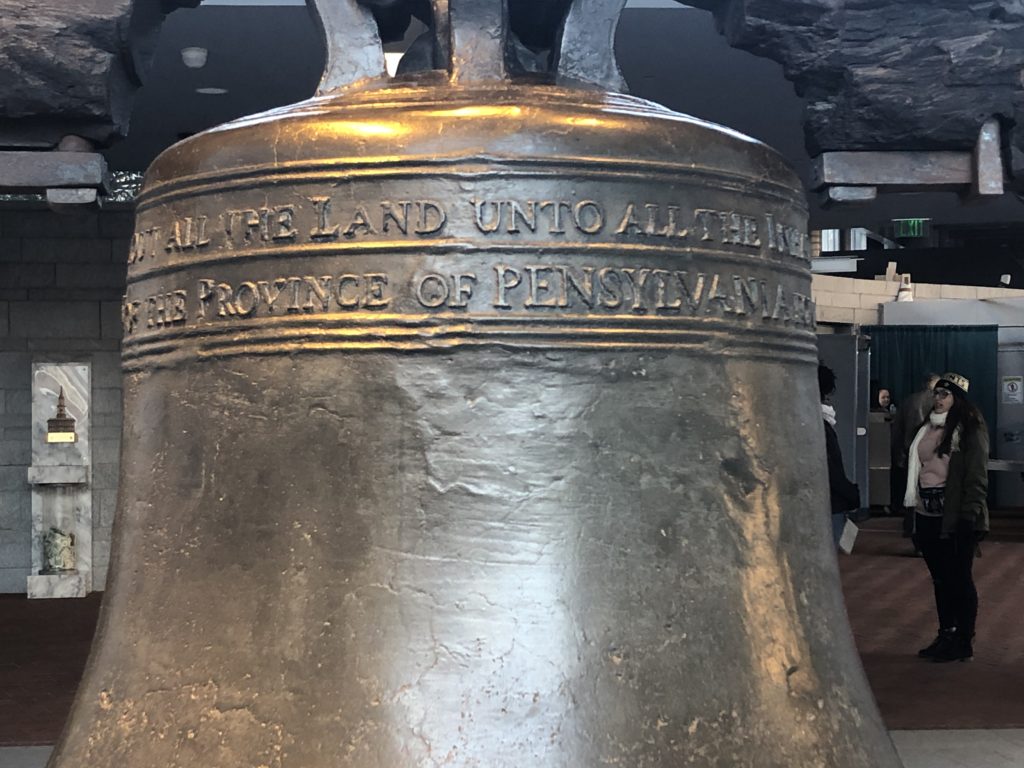
Every year, visitors flock to the Liberty Bell for a chance to get close to the bell, snap a picture, and hear her story. Here are five Liberty Bell fun facts that you didn’t know.
She’s the symbol of American independence right in the heart of the birthplace of freedom. Every year, visitors flock to the Liberty Bell from around the world in droves, waiting in long lines just for a chance to get close to the bell, snap a picture, and hear her story. But while the basic historical facts of the bell are widely considered common knowledge, some more unusual questions we found had gone unanswered. During a recent visit to Independence National Historical Park, I spoke with Julian Blanco, a park ranger. Here are five Liberty Bell fun facts.
1. In the inscription on the bell, many people think “Pensylvania” is spelled wrong because it doesn’t have the double ‘N’ in it, but really, in the 18th century, you could spell words a lot more liberally, and they would still be considered correct.
“Many people practiced what you’ll recall as alternate spellings,” said Blanco.
“Benjamin Franklin spelled the word ‘public’ with a ‘K’ instead of a ‘C.’ Depending on your regional dialect and your level of education, you would have a pretty free hand in spelling. You’ll see this a lot in writings of the 18th century. George Washington would write a word differently than say, John Adams.”
2. During the spring and summer months and when the park is expecting school groups, the number of visitors to the Liberty Bell averages anywhere from 10,000 to 15,000 a day. That averages out to 3.5-4 million people going through annually to the park, said Blanco. During the slow season (like now) it drops down to 2,000 people a day, and the lines are much shorter (if any wait at all).
“Most want to see Independence Hall, but during the height of the season, access can be scarce as you can only fit so many people in per hour. [Winter] is actually the best time to visit,” said Blanco.
3. There is no entry fee to see the bell. However, the Liberty Bell Center accepts donations.
4. Some visitors express wild enthusiasm when they first lay eyes upon the big bell. According to Blanco, he’s witnessed people try to hug it, kiss it, lick it, and even racier antics.
“Most people are pretty respectful of the bell. Nine times out of 10, it’s a little kid who will run under the ropes and touch the bell,” he said.
“It once made a ‘donk’ sound when a little kid ran under the ropes and did a header right to the side of it, fell down and started crying. The bell was undamaged but the kid had a nice shiner from that.”
5. A common misconception of the Liberty Bell is that the big, obvious crack down the front of it is the crack – yet it is actually the repair job. (This, we now know, was an unsuccessful attempt at a permanent fix.)
The channel that’s drilled into the bell was done deliberately to prevent a hairline fracture that started in the “P” in “Philadelphia” from spreading.
“That’s the crack that occurred in February 1846 that silenced the bell,” said Blanco.
But because the repair (the stress fracture) is so obvious, people focus on that. Originally, it would have been the same width as the hairline crack…”But when you have a bell that has this type of crack, the two edges will resonate against each other,” he said.
“That spoils the tune, but also leads the bell to crack further, so the idea behind stop drilling is if you drill the crack out and separate the edges, you eliminate that resonance, restore the pitch to the bell and keep the crack from spreading. It worked for Big Ben, but it didn’t work for the Liberty Bell.”
And there you have it. Learn something?



